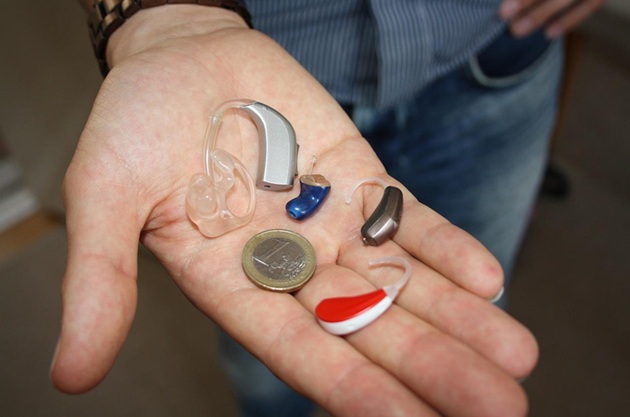Hearing loss affects millions of people worldwide, causing frustration and feelings of isolation. However, thanks to modern audiology technology, individuals with hearing loss now have a chance to rediscover the world of sound and reconnect with their loved ones. In this article, we will explore the fascinating field of audiology and focus on how hearing aids can significantly improve the quality of life for those with hearing challenges. Let’s dive into the science behind hearing aids, explore the various types available, and uncover the remarkable benefits they offer.
How Hearing Aids Work
Hearing aids are sophisticated devices designed to amplify sound waves and deliver them to the ear. Comprising three key components – a microphone, an amplifier, and a speaker – these small wonders capture environmental sounds, amplify them, and transmit the enhanced sounds to the inner ear and brain as recognizable sounds.
Modern hearing aids are equipped with advanced digital signal processing technology, allowing for natural and crystal-clear sound quality. They can also be programmed to reduce background noise and enhance speech, making it easier to engage in conversations, even in noisy environments.
Though hearing aids cannot fully restore normal hearing, they significantly improve hearing ability, making everyday experiences more enjoyable. It is essential to remember that hearing aids are not one-size-fits-all, and professional guidance is crucial in selecting the most suitable hearing aid for individual needs.
Types of Hearing Aids
Hearing aids come in various types, each with its unique advantages and considerations. The most common types include:
Behind-the-ear (BTE) hearing aids
BTE hearing aids rest behind the ear and are connected to custom earpieces fitted inside the ear canal. They are suitable for those with mild to severe hearing loss, offering durability and ease of maintenance.
In-the-ear (ITE) hearing aids
ITE hearing aids are custom-made to fit within the ear canal. Less visible than other types, they cater to individuals with mild to moderate hearing loss.
Receiver-in-canal (RIC) hearing aids
Similar to BTE hearing aids, RIC hearing aids are smaller and more discreet. They consist of a tiny speaker placed within the ear canal, connected to a receiver behind the ear.
Completely-in-canal (CIC) hearing aids
CIC hearing aids are the tiniest and most discreet option, fitting entirely within the ear canal. They suit individuals with mild to moderate hearing loss.
Factors to Consider in Choosing a Hearing Aid
Choosing the right hearing aid can be challenging, considering multiple factors. Some crucial aspects include:
- Degree of hearing loss: The extent of hearing loss determines the most suitable hearing aid type, especially for individuals with severe or profound hearing impairment.
- Lifestyle and environment: Opting for a hearing aid that aligns with one’s lifestyle and environment, especially regarding noisy surroundings, can significantly enhance the listening experience.
- Budget: While hearing aids may be an investment, various options are available, and insurance plans may cover part or all of the cost.
- Features: Different hearing aids offer varying features like Bluetooth connectivity, rechargeable batteries, and remote control functionality. Selecting the most valuable features for specific needs is essential.
Benefits of Using Hearing Aids
The advantages of hearing aids extend far beyond merely improving hearing. Some key benefits include:
- Enhanced communication: Hearing aids make understanding speech easier, leading to improved social interactions and a more fulfilling life.
- Cognitive benefits: Wearing hearing aids can help prevent cognitive decline and contribute to better overall cognitive function.
- Increased safety: Hearing aids allow wearers to hear warning signals and environmental sounds, promoting a safer environment.
- Better overall health: By reducing depression, anxiety, and social isolation linked to hearing loss, hearing aids contribute to better overall well-being.
Common Misconceptions About Hearing Aids
Despite their numerous advantages, several misconceptions surround hearing aids, such as:
- Exclusively for older individuals: Hearing loss can affect people of all ages, making hearing aids suitable for anyone with hearing difficulties, regardless of age.
- Bulky and uncomfortable: Modern hearing aids are designed for comfort and discreetness, many of which are barely visible.
- Expensive: While some hearing aids can be costly, affordable options exist, and insurance plans or financial assistance programs can help reduce costs.
Caring for and Maintaining Hearing Aids
Proper care and maintenance are vital for the optimal performance and longevity of hearing aids. A few essential tips include:
- Regular cleaning: Regularly clean the hearing aid, including the microphone and receiver, to prevent damage and maintain sound quality.
- Battery replacement: Regularly replace batteries to ensure continuous functionality.
- Moisture protection: Protect hearing aids from sweat and humidity to avoid damage.
- Correct storage: Safely and dryly store hearing aids to prolong their lifespan.
Where to Obtain Hearing Aids and Reduce Costs
Hearing aids can be purchased from various sources, including hearing aid clinics and audiologists in Colorado Springs, CO, and online retailers. To ensure the best fit and programming, it is advisable to seek reputable sources and licensed audiologists.
Though hearing aids may appear expensive, there are avenues to reduce costs. Many insurance plans cover part or all of the expenses, and several organizations provide financial assistance to individuals with hearing loss.
Other Hearing Loss Treatments and Assistive Devices
In addition to hearing aids, several treatments and assistive devices cater to individuals with hearing loss, including:
- Cochlear implants: Surgical options for severe or profound hearing loss, consisting of an implant within the inner ear and a device delivering sound to the implant.
- Assistive listening devices: Devices like personal amplifiers and FM systems help individuals with hearing loss hear more clearly in specific settings, like classrooms or lectures.
- Hearing loops: Systems transmitting sound directly to hearing aids can be used in public spaces, such as theaters and places of worship.
Conclusion and Encouragement to Seek Professional Help
Hearing loss need not be a barrier to joy and connection. Thanks to modern audiology technology, hearing aids can unlock the world of sound and enrich the lives of those with hearing challenges. Whether it’s for yourself or a loved one, seeking professional help from a licensed audiologist is essential to determine the extent of hearing loss and find the best-suited solution. Embrace the journey of rediscovering the joy of listening and restoring the beauty of everyday sounds with hearing aids.





